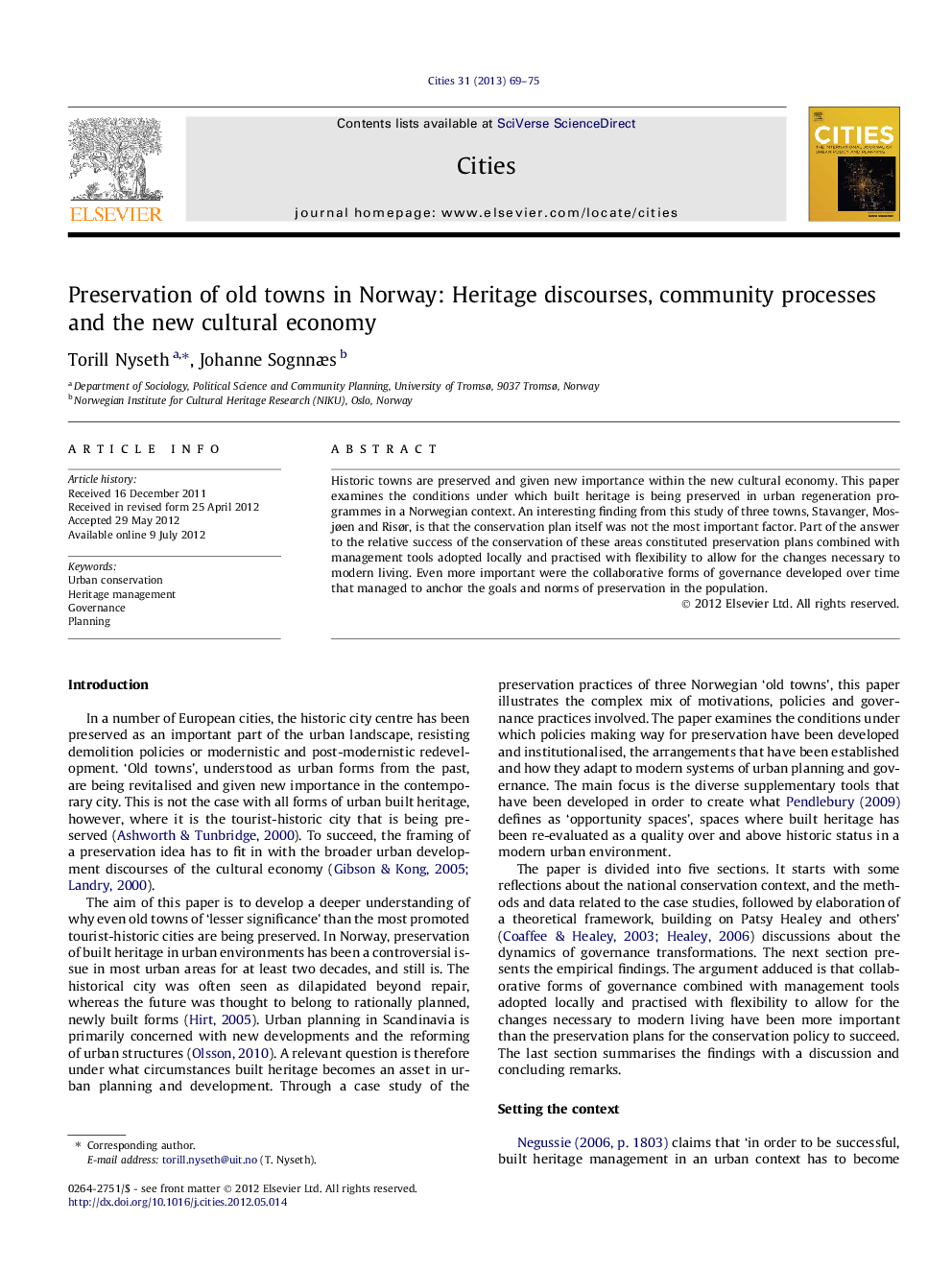| Article ID | Journal | Published Year | Pages | File Type |
|---|---|---|---|---|
| 1008502 | Cities | 2013 | 7 Pages |
Historic towns are preserved and given new importance within the new cultural economy. This paper examines the conditions under which built heritage is being preserved in urban regeneration programmes in a Norwegian context. An interesting finding from this study of three towns, Stavanger, Mosjøen and Risør, is that the conservation plan itself was not the most important factor. Part of the answer to the relative success of the conservation of these areas constituted preservation plans combined with management tools adopted locally and practised with flexibility to allow for the changes necessary to modern living. Even more important were the collaborative forms of governance developed over time that managed to anchor the goals and norms of preservation in the population.
► Built urban heritage as a cultural economy asset. ► Collaborative forms of governance developed over time and adjusted to the local context. ► Management tools adopted locally and practiced with flexibility.
